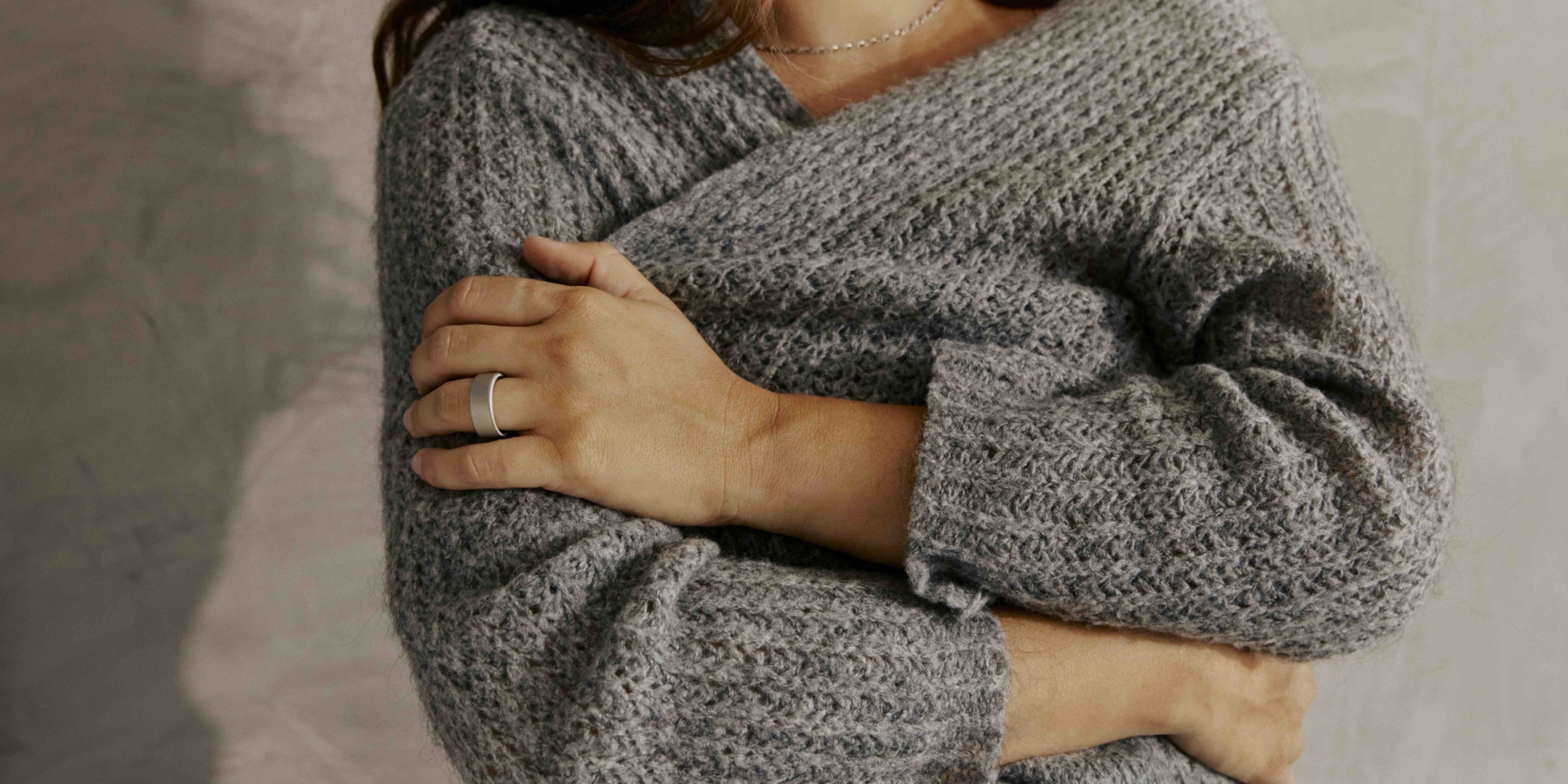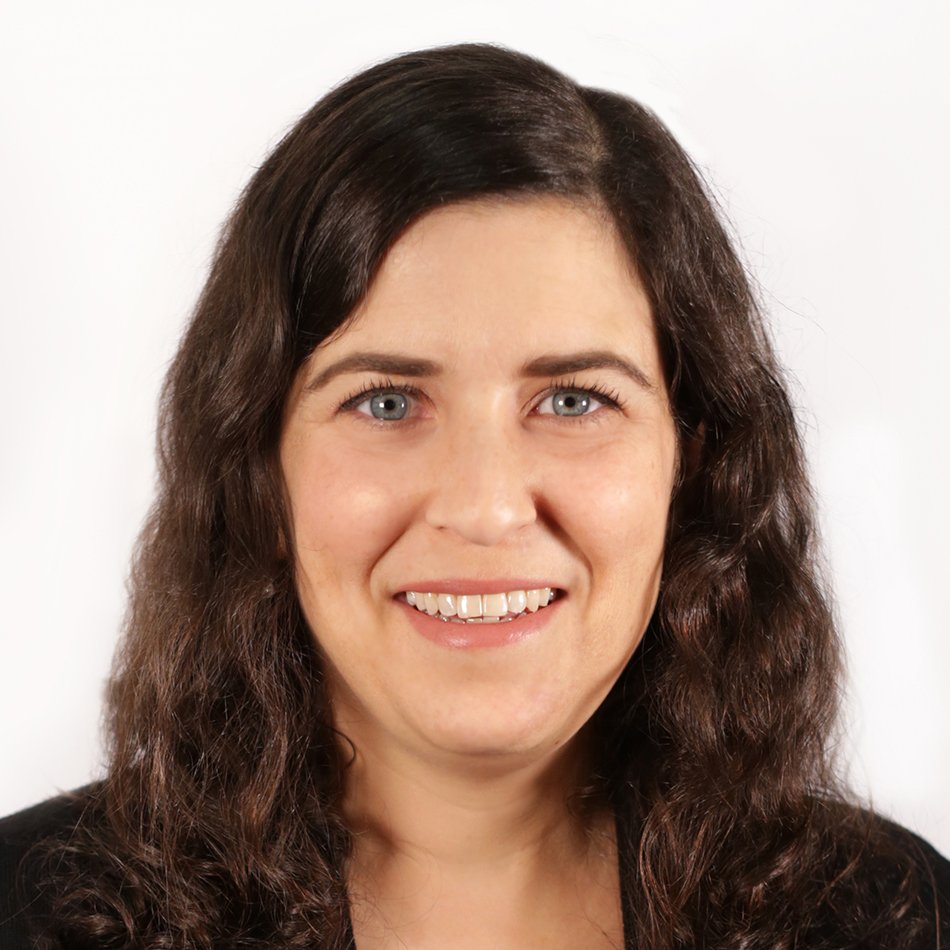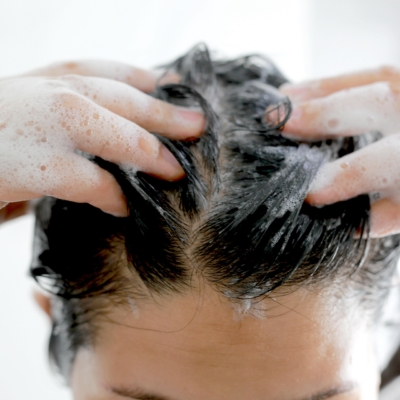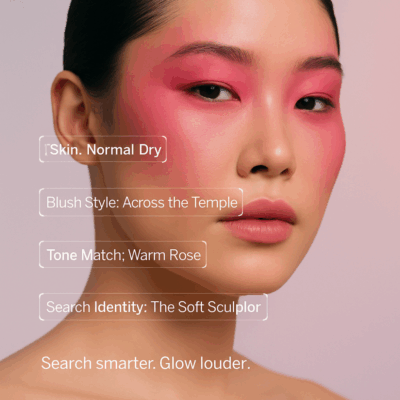
As Oura Circles $11B Valuation, Investors Track Implications For Beauty And Wellness
Oura Health, maker of the ubiquitous titanium—and now zirconia ceramic—rings that monitor sleep, blood oxygen, fitness, heart rate and more, is targeting an $11 billion valuation in an $875 million series E funding round.
After generating about $500 million in revenue in 2024, the Finnish company expects to double that figure in 2025 and reach $1.5 billion by 2026. Oura has sold roughly 5.5 million rings to date, with around 2.5 million sold since mid-2024. The newest generations of the Oura smart ring start at $349 for titanium and $499 for ceramic, and users pay a $5.99 monthly membership fee to unlock personalized health insights.
In our conversations with beauty and wellness industry insiders at Beauty Independent, the rise of personal data tracking and wearable technology is a frequent topic. Timed with Oura’s latest fundraise, we wanted to delve into those conversations. So, for this edition of our ongoing series posing questions relevant to indie beauty and wellness, we asked nine beauty and wellness investors the following:
What are the implications of Oura’s rise, and the broader surge in wearables and personal data tracking for emerging beauty and wellness brands? How can brands take cues from Oura’s success even if they aren’t in the business of health tracking themselves? If you invest in this space or are considering it, what specifically are you looking for in terms of opportunity, differentiation or value?
- Brian Sugar Co-Founder and Managing Partner, Sugar Capital
Oura’s rise highlights two important themes for beauty and wellness brands: personalization and recurring engagement. What makes Oura valuable isn’t just the hardware, it’s the feedback loop of data that keeps users paying and returning daily. That same mindset applies to consumer brands: the more you can build a relationship that adapts to a customer’s individual needs, the more durable your business becomes.
Even if you’re not in wearables, the takeaway is clear. Consumers are increasingly trained to expect products that not only work, but also respond, whether that’s skincare that evolves with your routine, nutrition that adapts to your lifestyle or wellness formats that feel tailored rather than static. Oura has normalized the idea that technology can coach, guide and personalize. Beauty and wellness brands should think in the same terms.
As an investor, I’m drawn to companies that either one creates the “data layer” for consumers, whether through tracking, diagnostics or digital behavior or two design products that can plug into those systems and benefit from the insights. Differentiation comes from more than good branding; it comes from building something that compounds in value as more people use it. That could be through network effects, through proprietary data or through a subscription model where the relationship strengthens over time.
- Divya Gugnani Founder, Concept to Co and 5 Sens
I'm a die-hard Oura user myself. As an entrepreneur, I live by the principle that you can't improve what you don't track. Success-oriented people with real goals need measurable progress, whether that's sleep quality, recovery or business metrics. Oura understands this fundamental truth.
The Quantified Longevity Movement
Oura's $11 billion valuation isn't just about smart rings, it's about tapping into our cultural obsession with health optimization and longevity. We're no longer satisfied with feeling "pretty good." We want data proving we're extending our healthspan, optimizing our performance and making progress toward living better, longer lives.
This intersection of tracking plus measurable results plus longevity goals creates unprecedented stickiness. When users see their sleep score improve or their HRV trend upward, they're hooked. It's not marketing, it's their own data proving the value. That daily engagement is what transforms a $349 purchase into a $5.99/month annuity that users happily pay because the alternative feels like flying blind.
Implications for Beauty and Wellness Brands
The bar has been raised. Consumers increasingly expect:
- Measurable outcomes, not just promises.Skincare claiming stress reduction or sleep benefits will face skepticism without proof. Brands need their own feedback mechanisms, whether partnering with existing wearables or building proprietary tracking.
- Subscription value beyond replenishment.Oura's membership model works because the software gets smarter about you over time. Beauty brands need to shift from "buy more product" to "unlock personalized optimization." Think adaptive formulations, progress dashboards, diagnostic tools that create ongoing relationships.
- The system, not just the serum.The real value isn't the hardware, it's the habit formation and identity it creates. Daily engagement drives retention. Brands that build rituals with visible, trackable progress will win.
What I'm Watching
The "quantified beauty" gap is massive. Oura owns sleep and fitness. No one has made skin health tracking this seamless and actionable. The first brand to create an Oura-level feedback loop for skincare, showing users how their routine correlates with measurable skin improvements, could be transformative.
I'm also interested in integration plays: brands designed to work with existing wearables data. "Your Oura shows poor recovery, here's your adjusted supplement stack." This leverages adoption without building hardware.
The Bottom Line
Oura proves that when you help goal-oriented people track meaningful progress toward health and longevity, you create compounding engagement. For beauty and wellness brands, the question is: How do you make your product accountable to results in a way that turns occasional users into daily trackers? That's where the real value—and stickiness—lives.
- Dawn Dobras Co-Founder, Capital F
What Oura Gets Right => Personal Data + Action = Moat
1. The Oura Effect in a Nutshell
Oura shows us the future of beauty and wellness isn’t just products, it’s personalized insights that change behavior. Oura doesn't just collect my data, it translates my biometrics into actionable insights that change my behaviors. (Yes, I drink less and sleep more consistently now.) Brands that connect great products with actionable data are building the real category-defining moats.2. Why It Matters for Beauty & Wellness => The Care Economy Meets Preventative Wellness
We see consumers moving from “care” to preventative wellness powered by personal data and AI. The biggest opportunities lie in hormonal health, stress, sleep and longevity backed by science, not hype.
At Capital F, we’ve already seen how this playbook drives category leadership. We invested in Stardust, which gives gen Z women control of their health through tracking and community; Hey Jane, which redefines telehealth for reproductive care; Xella Health, which brings lab-grade diagnostics into everyday decision-making; and Midi, which is pioneering menopause telehealth. In each case, the power isn’t just in the product, it’s in translating personal health data into actionable, life-changing insights.
3. The Investment Lens
Hardware is hard and requires massive funding. (Oura has raised $1.2 billion to date). The opportunity for beauty and wellness brands isn’t building the next Oura, it’s integrating with platforms like Oura or Apple Health, using that data to deliver measurable, personalized outcomes to power your differentiation.- Matthew Wan Principal and Co-Founder, JAZZ Venture Partners and Sett
For consumable products or services in the beauty and wellness category, I look at the implications of the “quantified self” in two ways. The first take would be the more cynical or simple-minded view, which is that consumers still basically care about the same things they did 20 years ago regardless of what their sleep tracker tells them. They want to look better and feel better. Sure, longevity wasn't such a buzzword back then, but, at the core, people's motivations to buy a product are essentially the same. I think there's a lot of truth to this, but it's definitely an oversimplification.
The second lens would be that devices such as Oura and the proliferation of other biomarker tracking has given people a new set of dimensions on which to "optimize themselves." Whereas before a consumer might have fixated on the number on the scale, today they can obsess over their sleep score or ApoB. This opens huge opportunities for products and services to address those specific use-cases.
Coincidentally my firm, JAZZ Venture Partners, is a major investor in Oura. What we look for in companies first and foremost is the people. With the product itself I think companies can innovate along a few dimensions, namely form factor (Oura, Gruns), distribution (Rare Beauty, Skims, etc.) or pricing (scarcity, subscription, etc.).
The last thing is timing. You don't want to be too early to a trend otherwise no one will understand or care about what you're selling, but if you're too late, then there will be too much competition. Timing is the hardest part by far because by the time a trend is obvious it's probably too late for an early-stage investor like us to be placing bets.
- Rachel Hirsch Managing Partner, Wellness Growth Ventures
Oura is a fascinating case study because they no longer just sell a sleek titanium ring; they rewired consumer psychology in many ways. For emerging beauty and wellness founders (and transparently investors too), the lessons are less about hardware and more about how Oura trained people to value data, membership and cultural status.
Proof That Consumers Want Longitudinal Data
Oura made people obsess over tracking themselves over time—sleep, readiness, recovery—even if those scores didn’t always change their behavior. Turned personal metrics into a form of comparison and judgment: “I slept better than you,” “My readiness score is lower, so I need a recovery day.” Created a “quantified identity” that consumers could screenshot, share or use as shorthand for how they’re doing.
And, now, consumers aren’t just buying products, they’re buying a way to measure themselves against yesterday and against others. Even imperfect or non-actionable data feels valuable because it gives people a sense of control and a story to tell about their health.Potential takeaways for other brands:
1. Progress Visualization: Even if you don’t have wearables, give consumers ways to see change over time: before/after rituals, monthly check-ins, digital skin diaries.
2. Social Sharing Hooks: Make it easy for progress to be shown in group chats, IG stories or communities (e.g., streak counters, ritual completion badges).
3. Gamified Comparison: Tap into the human instinct to judge/compare—leaderboards in challenges, collective progress goals or milestones people can flex.Membership Mindset (from transaction to ongoing relationship)
Oura normalized that the purchase is just the entry point ($349 ring → $5.99/month membership). They created a recurring loop where canceling doesn’t just stop the bill, it means losing your data history. Similarly to the Peloton effect, it shifted consumer psychology: ongoing charges in wellness are now expected like Netflix or Spotify.
Potential takeaways for other brands:
1. Move from “subscription” to “membership”: make it about belonging and access, not just auto refills.
2. Create evergreen value (monthly ritual guides, evolving insights, seasonal drops) so the relationship compounds over time.
3. Bake in emotional switching costs: if members leave, they lose their streak, their progress history or their insider status.Community And Credibility Create A Flywheel
Oura began with biohackers and true wellness junkies and then graduated into cultural status by seeding with athletes, celebrities and CEOs. They eventually made the ring a sort of luxury accessory and turned data into clout. Sleep and readiness scores became a sort of conversational currency.
Potential takeaways for other brands:
1. Create social signals: Encourage sharing of rituals, results or milestones so your product lives in group chats, not just on shelves.
2. Show up in culture: Place your brand in aspirational spaces—retreats, art events, athletes’ sidelines—so it feels like a cultural marker, not just a product.For beauty and wellness founders (and again investors), the opportunity isn’t necessarily to build another wearable, it’s to harness those same instincts. The brands that win will create longitudinal stories, membership-like stickiness and cultural cachet that turns a product into a movement.
- Tina Bou-Saba Investor
I must admit, when I first started hearing about Oura rings four or five years ago, I felt that they were kind of goofy. I thought that the basic health tracking available on the iPhone was adequate. Wrong! When I began to see several of my friends as well as many people at my local Equinox wearing Oura rings over the past couple of years, I realized that the demand for this sort of personalized and actionable health tracking data was much larger than I had foreseen.
To me, this phenomenon speaks to the massive opportunity in health and wellness that is in front of us. In wellness, I see a huge pie that is expanding quickly. Wellness today feels similar to what "clean beauty" felt like when I began investing in the category in the mid-2010s. I am very excited about opportunities across business models in the wellness space, including consumer products, four-wall businesses and digital services.
I will always love beauty like a firstborn child, but it is incredibly crowded. Growing a brand in many beauty categories today is more about gaining market share from other brands than it is about growing the overall pie. Wellness is different. There is much more white space available for new businesses to pursue and a tremendous amount of opportunity for innovation. Many of the fastest growing and most capital-efficient consumer businesses that I see today are in the wellness category.
Fundamentally, Oura's rise speaks to consumers' expectations for measurable and personalized wellness solutions. They want to feel more in control of their health and less dependent on the healthcare system for information and reactive treatments. Emerging consumer product brands should assume that consumers are informed and have high expectations for quality and efficacy. I see a great deal of opportunity for accessible products in the mass channel.
Additionally, I believe that four-wall service businesses like med-spas and other wellness concepts (there are many interesting ones out there!) have major growth potential, especially against a backdrop of high demand for entrepreneurship. Finally, I'd mention women's health as a hugely underserved area that is ripe for innovation.
- Claire Cherry Partner, Era VC
Oura’s growth validates the consumer desire to better understand, monitor and improve on our own health outcomes. Oura proves that access to health data can be democratized by creating aesthetically beautiful consumer products alongside an exceptional user experience. We think this is the key to unlocking growth across many areas of consumer wellness regardless of whether brands are selling wearables, consumables or topicals.
Oura has another key differentiating factor. Whilst they gave consumers access to their own data, this was only the starting point. They also told them how to easily interpret this data and, most importantly, how to take steps to improve their outcomes shown in the data. Without showing these tangible steps forward, consumer interest quickly wanes. The “so what” is a key piece of the puzzle for any data-first consumer brand regardless of whether they’re selling software or hardware to their customers.
Having said all of this, one of the most important elements of Oura’s growth has been to build with trust and authentic connection at their core, and we believe this is the key to building any successful brand in the wellness space regardless of form factor. We believe that nurturing and empowering your community is at the heart of building an enduring consumer brand for the next decade or more, and we are actively looking at the intersection of consumer health and wellness for brands that are succinctly answering the call of their community.
- Sam Kaplan Partner, Five Seasons Ventures
Consumers are increasingly focused on biohacking and accurate counting stats are certainly the most accessible route to dip your toe in the water. For beauty brands, the awareness of and interest in health quantification and optimization should serve as an aid in design choice.
Either develop and present a novel and cutting-edge solution (clinical studies, legitimate efficacy, etc.) or buck the trend completely and appeal to the other senses (fragrance, tactile feel, self-care). Not all body creams need to cure every malady under the sun while also leaving one's skin looking 30 years younger, but, if you're going to make that claim, you better be able to back it up.
An interest in what works is, by default, an interest in what does not work. Accordingly, the worst place to be is in the middle. The shelves are packed with brands that gesture at science without real clinical rigor or brands that promise a genuine escape only to still try to sell (weak) science-based claims. Too many brands are trying to do a bit of both, and in doing so, they stand for nothing.
I look for brands that understand what they are trying to say and say it loudly and consistently. That may be hard data and results or it may be the permission to drop the data altogether, but it is never both.
- Odile Roujol Founder, Fab Co-Creation Studio Ventures
I truly believe that the future belongs to companies enabling the measurement of personalized biometric data. I have invested in Function Health, a fast-rising health tech platform tracking 100-plus blood biomarkers (nutrients, glucose, immunity, hormonal and metabolic health and now MRI), guiding users in their daily life to deal with the root causes of aging. It provides accessible, comprehensive and affordable lab testing with personalized insights, shifting health from reactive to proactive management. It resonates with consumers seeking to understand their health deeply and prevent illness before it becomes a crisis.
The Oura Ring tracks 20 biometrics, including heart rate, temperature, sleep patterns and physical activity. My common-sense concern is tracking sleep is creating more anxiety than helping people, and once you know you need eight hours or more and go to bed at the same time and early, I have a doubt that it will be interesting for a broad target.
Still, learnings from Oura’s success are that it’s discreet and comfortable to wear all the time. It’s a small ring, more comfortable than an Apple Watch, especially for sleep, and blends with other accessories. It looks discreet and low tech, even as it’s tracking data. From what I hear from friends, it’s perfect for long-term wellness insights, with a long battery life of around seven days for nonstop 24/7 tracking.
My question is: What do they help people with in their current business model? I doubt it’s as efficient as Function Health for proactively managing health, still their recent launches measure pregnancy or perimenopause insights.
The lesson for all brands is that more and more customers will be used to measuring their beauty/aging “outside,” but also “inside” to find the root causes of aging and skin and hair issues. I believe there is a shift in the talent needed at consumer brands, with tech and data profiles essential in the future from day one.
If you have a question you’d like Beauty Independent to ask beauty and wellness investors, please send it to editor@beautyindependent.com.






Leave a Reply
You must be logged in to post a comment.